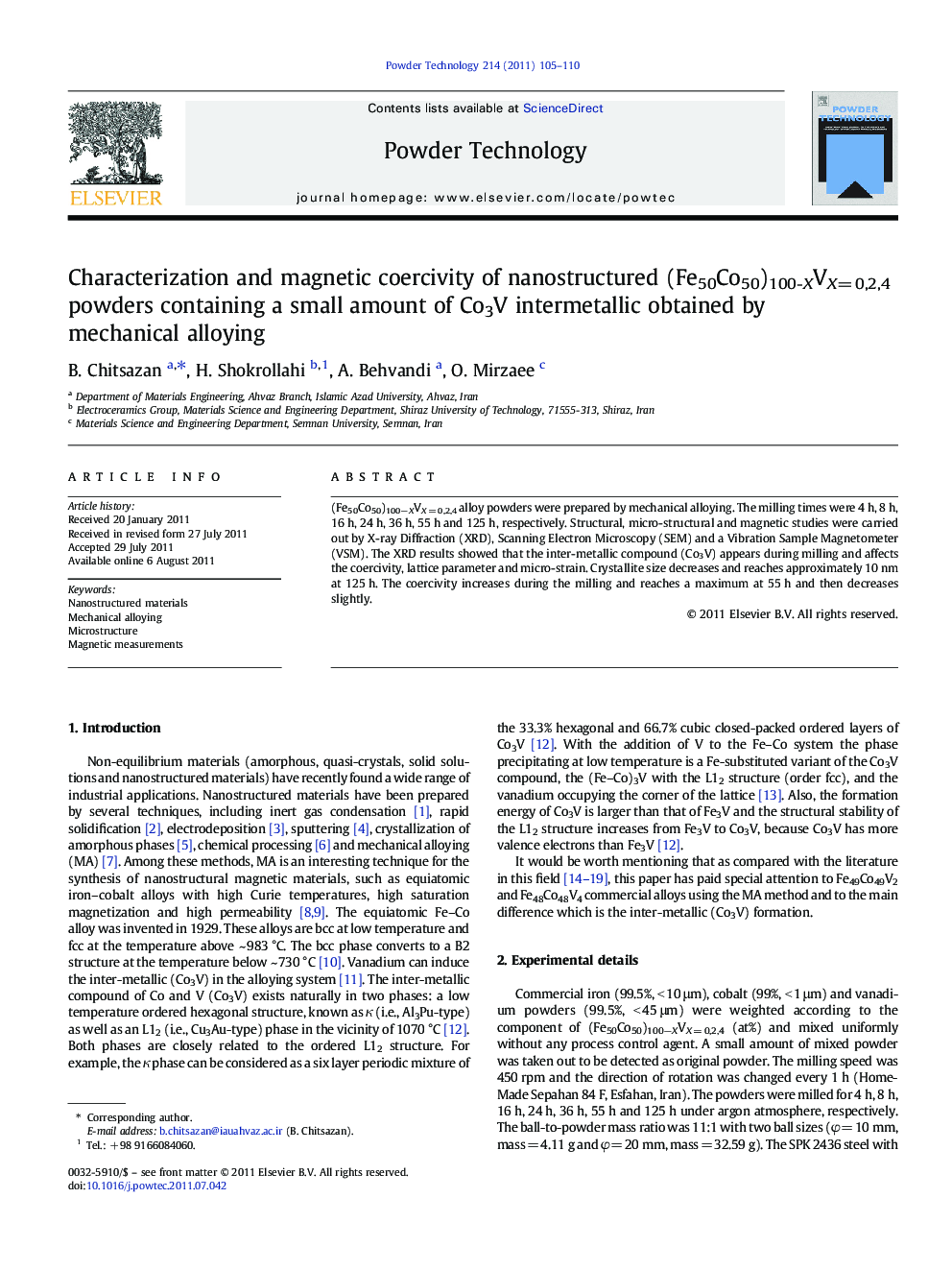| Article ID | Journal | Published Year | Pages | File Type |
|---|---|---|---|---|
| 237516 | Powder Technology | 2011 | 6 Pages |
(Fe50Co50)100−XVX = 0,2,4 alloy powders were prepared by mechanical alloying. The milling times were 4 h, 8 h, 16 h, 24 h, 36 h, 55 h and 125 h, respectively. Structural, micro-structural and magnetic studies were carried out by X-ray Diffraction (XRD), Scanning Electron Microscopy (SEM) and a Vibration Sample Magnetometer (VSM). The XRD results showed that the inter-metallic compound (Co3V) appears during milling and affects the coercivity, lattice parameter and micro-strain. Crystallite size decreases and reaches approximately 10 nm at 125 h. The coercivity increases during the milling and reaches a maximum at 55 h and then decreases slightly.
Graphical abstractFe50Co50)100−XVX= 0,2,4 alloy powders were prepared by mechanical alloying. The milling times were 4 h, 8 h, 16 h, 24 h, 36 h, 55 h and 125 h, respectively. Structural, micro-structural and magnetic studies were studied. The XRD results showed that the inter-metallic compound (Co3V) appears during milling and affects the coercivity, lattice parameter and micro-strain. Crystallite size decreases and reaches approximately 10 nm at 125 h. The coercivity increases during the milling and reaches a maximum at 55 h and then decreases slightly. X-ray diffraction patterns of the Fe48Co48V4 powders for different milling times.Figure optionsDownload full-size imageDownload as PowerPoint slideHighlights► (Fe50Co50)100-XVX=0,2,4 alloys are mechanical alloyed by MA method. ► Effect of milling process on nanostructure and magnetic coercivity is determined. ► Intermetallic compound (Co3V) appears at 8h of milling time. ► The intermetallic phase affects coercivity, lattice parameter and microstrain.
